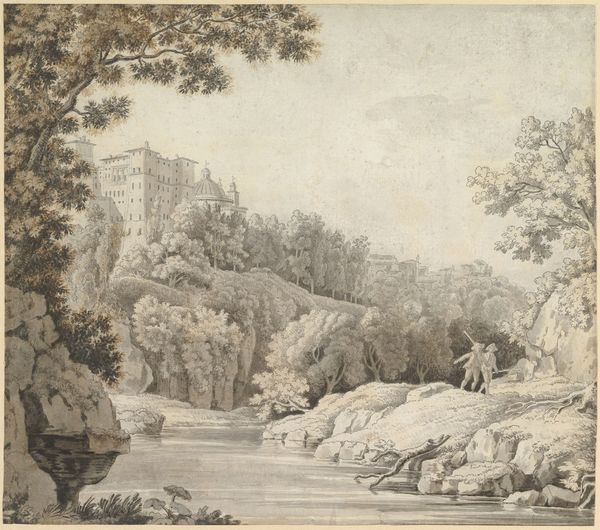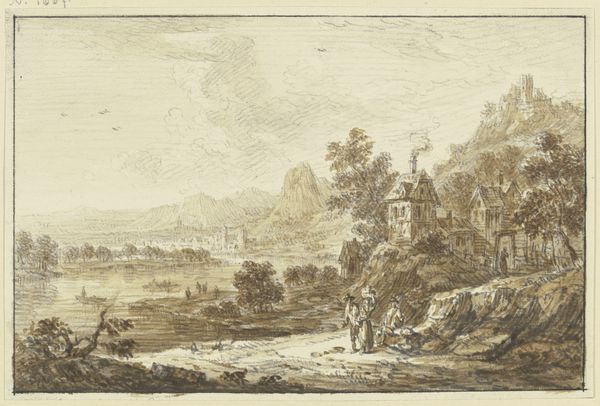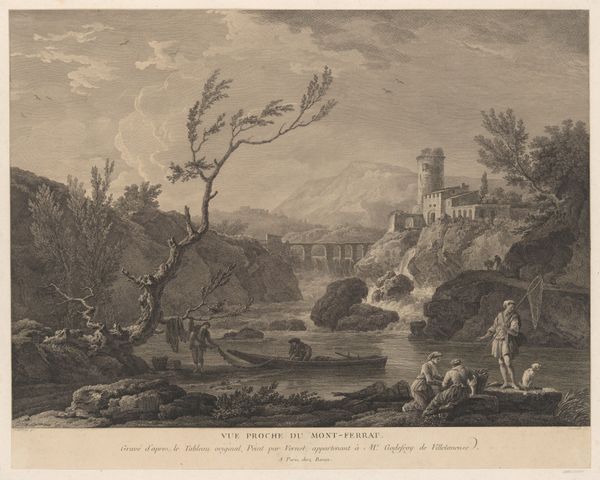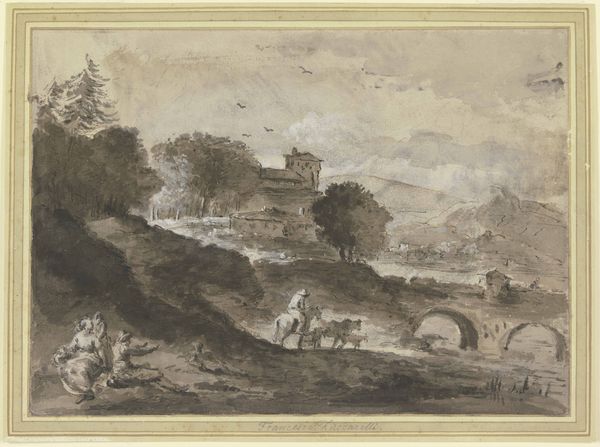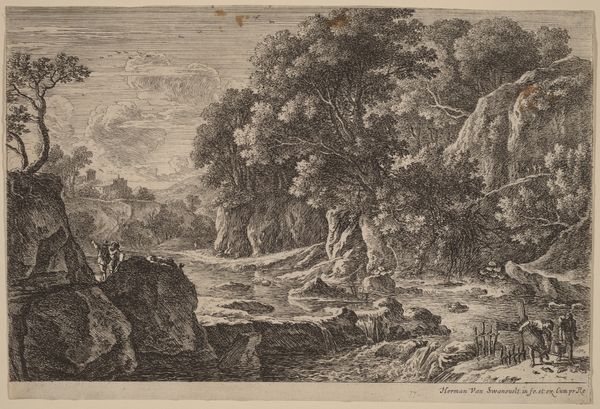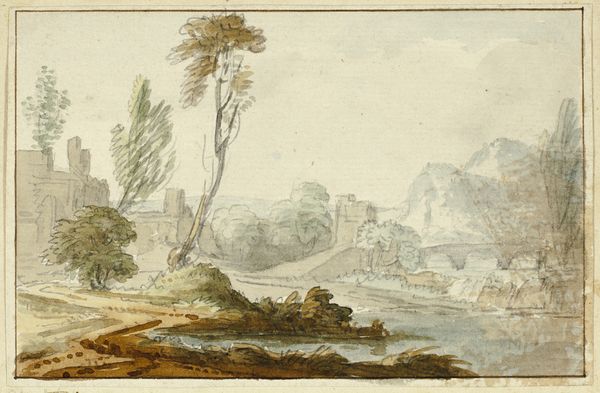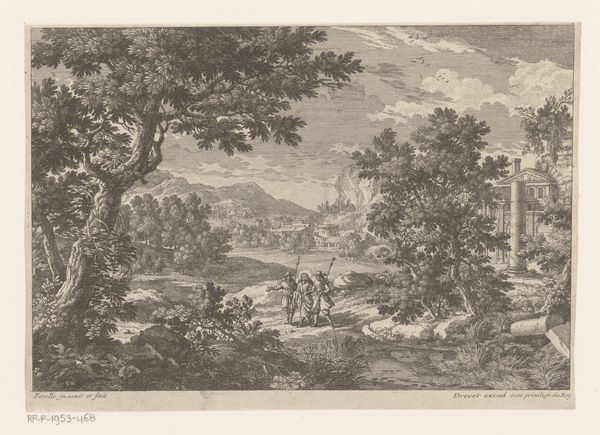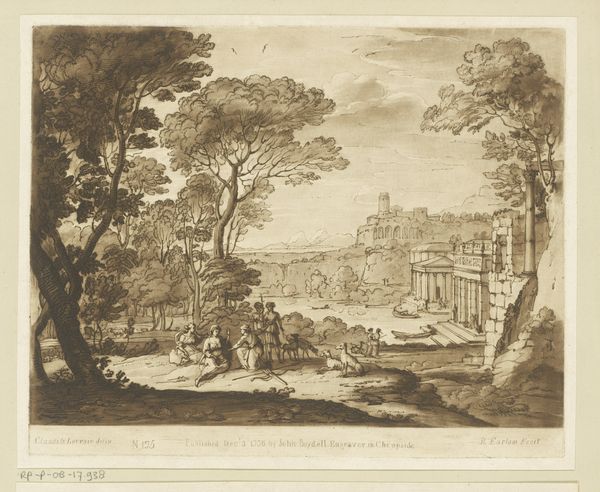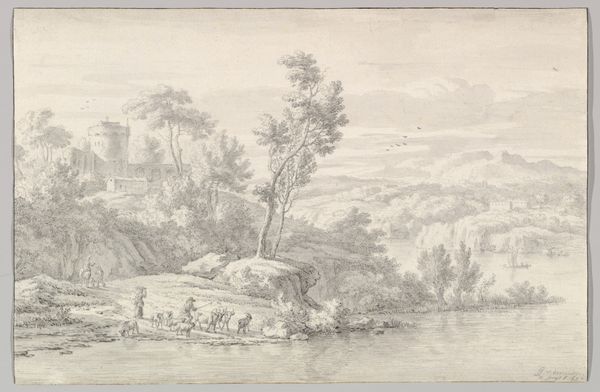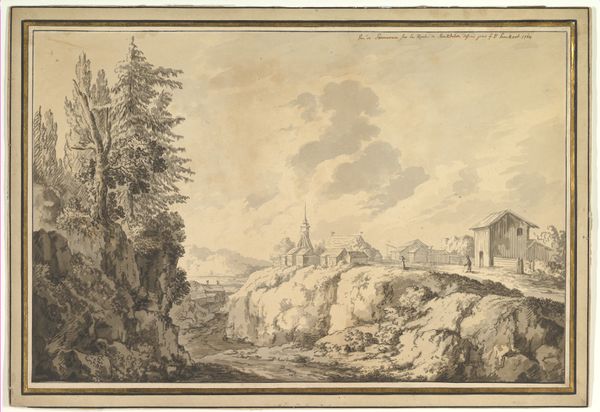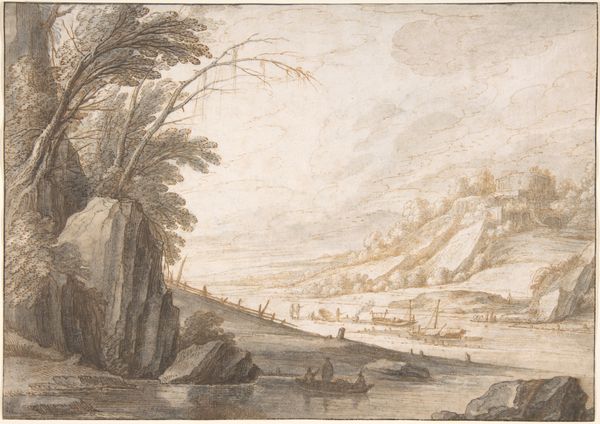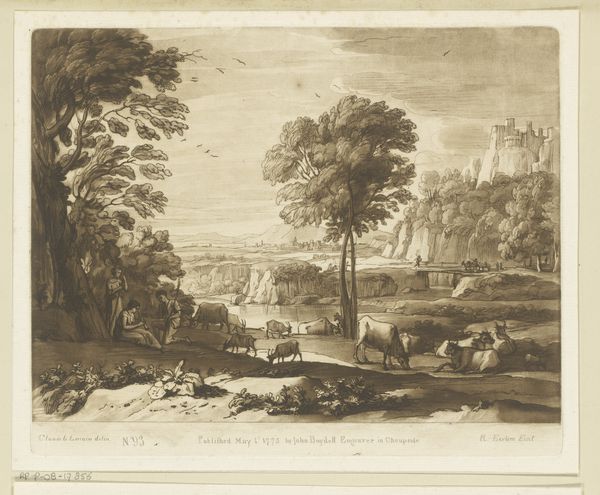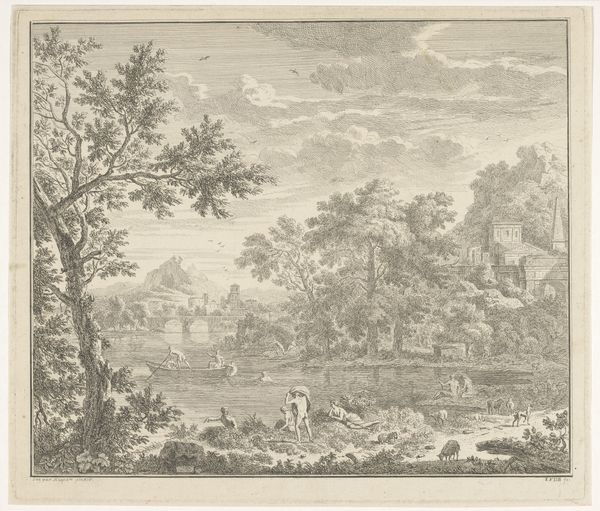
Dimensions: Sheet: 8 3/4 x 12 in. (22.3 x 30.5 cm)
Copyright: Public Domain
Curator: Before us is "Classical Landscape," a drawing, etching and watercolor creation from sometime between 1730 and 1758, by Jean-Baptiste-Claude Chatelain. It resides here at the Metropolitan Museum of Art. Editor: My first impression is a kind of gentle melancholy. It's almost monochromatic, various shades of brown like old paper or sepia photographs. What stands out is the artist’s method - delicate layers built using line and wash; but for what purpose? Curator: Indeed. The image evokes a very specific set of historical associations, almost a visual vocabulary. Notice the ruined architecture integrated into the landscape? These elements immediately speak of the classical past, decay, and the passage of time. The very conscious placement evokes ideas of history's grand narratives. Editor: But it also makes me consider Chatelain’s process. These layered washes are painstaking work. Was he responding to client expectations in representing land, place, ownership and aspiration? Were such landscapes saleable items within the social and economic relations of artistic production in 18th-century Europe? Curator: Good question. It speaks to patronage. Wealthy landowners often commissioned such scenes, not just for their aesthetic value, but as statements of cultural capital, references that emphasized their ties to the perceived glories of the past. The imagery becomes a kind of symbolic shorthand for power and taste. Editor: Which perhaps serves to hide that relationship to labour. Etching as a process is all about reproduction – in a sense then, the drawings’ importance lies in Chatelain's craftsmanship and business acumen; he and those around him found a ready market for repeated landscape views. It’s not simply an ‘aesthetic’ choice, but a reflection of the commodification of nature and the pastoral ideal. Curator: But there is something undeniably moving in the very *style* of the romantic era. Even as those old systems operated as you mentioned, these works allowed a certain feeling for nature to exist - what could even border on pantheism. The birds flying overhead echo freedoms above property itself. Editor: Maybe. But those birds overhead may as well be the smoke from the early industrialization happening even as the watercolor dried. Thanks to industrial extraction, scenes such as these became valuable symbols, in ways the commissioner of such pieces may not even realize today. Curator: So, ultimately, both artist and patron partake in constructing narratives of value, whether consciously or not. We see layers of meaning. Editor: Yes. The image allows for aesthetic contemplation whilst asking complex questions.
Comments
No comments
Be the first to comment and join the conversation on the ultimate creative platform.
